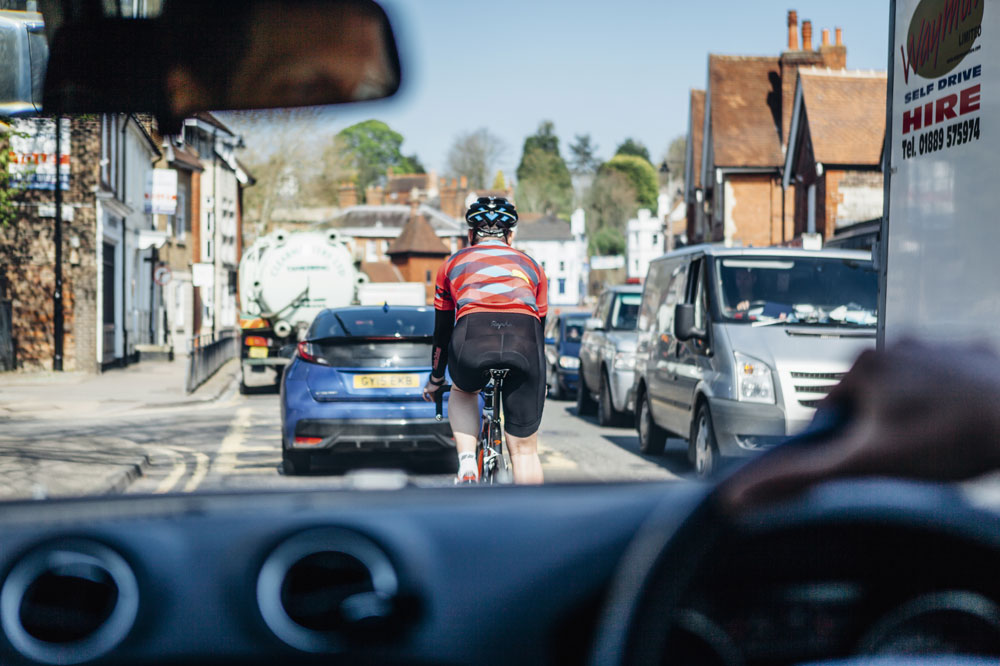Cycling is quicker than driving and riders are exposed to less pollution, studies show
Two sets of statistics published this week highlight the benefits of cycling


Driving in urban areas is slower than cycling, according to figured published by the Department for Transport (DfT) on Thursday.
On the same day, researchers released data from a Leeds study that looked into air pollution, finding that cyclists breathe in less traffic related pollutants than drivers.
The DfT report showed that cars and vans using urban roads traveled at an average of 18 miles per hour, from January until the end of September this year.
This is 0.5mph slower than the previous year. The slowest roads where in London, where 7.6mph was the average speed, and March this year was the slowest month across the country as a result of unexpected bad weather.
Average speeds have steadily sunk, the first published results reported 19.8mph in 2014, and the blame has been laid firmly at the door of an increase in the number of vehicles on the road.
In a separate release, the DfT should that in the same period (Jan-Sept 2018), there were 38.4 million vehicles at large. This is up from 38 million in 2017 and represents an increase of 40 per cent compared to 1998 (27.8 million).
The latest race content, interviews, features, reviews and expert buying guides, direct to your inbox!
The increase in cars on the road certainly hasn't helped with pollution levels, though research has shown that cyclists are less affected than drivers and bus users.
Researchers in Leeds used a pollution-measuring van to track commutes during rush hour - comparing 4km/2.5mile journeys in and out of the city.
The cyclists reached their destinations in the shortest time - 11 minutes, compared to 21 minutes for drivers, 25 minutes for bus users and 35 minutes for walkers.
Over the course of the journey, cyclists were exposed to 12m pollution particles, compared to 20m for drivers, 19m for bus users and 55m for walkers.
The researchers tested a 'green' walking route for the walkers as well, this was 20 per cent longer, but saw them exposed to 75 per cent less pollution particles.
The highest exposure for walkers comes at traffic lights, and for cyclists it was when high buildings surrounded them on either side, trapping dirty air.
Nitrogen dioxide levels were only tested from inside the car - and it was found that inside an electric Nissan van, the driver was exposed to levels above the legal limit of 40 micrograms per cubic metre for most of their journey. Peaks stood at more than 100 micrograms per cubic metre.
Last month, the government unveiled 50 new road safety measures, designed to champion walking and cycling.
These include insurance cuts for drivers who take a cycling proficiency test, ring fenced spending and walking and cycling champions in council offices.
Unveiling the plans, transport minister Jesse Norman said: “We want to improve air quality, encourage healthy exercise, reduce obesity and boost our high streets and economic productivity.
“That means more support for cycling and walking, and that’s why these new measures are designed to deliver.”
Michelle Arthurs-Brennan the Editor of Cycling Weekly website. An NCTJ qualified traditional journalist by trade, Michelle began her career working for local newspapers. She's worked within the cycling industry since 2012, and joined the Cycling Weekly team in 2017, having previously been Editor at Total Women's Cycling. Prior to welcoming her first daughter in 2022, Michelle raced on the road, track, and in time trials, and still rides as much as she can - albeit a fair proportion indoors, for now.
Michelle is on maternity leave from April 2025 until spring 2026.
